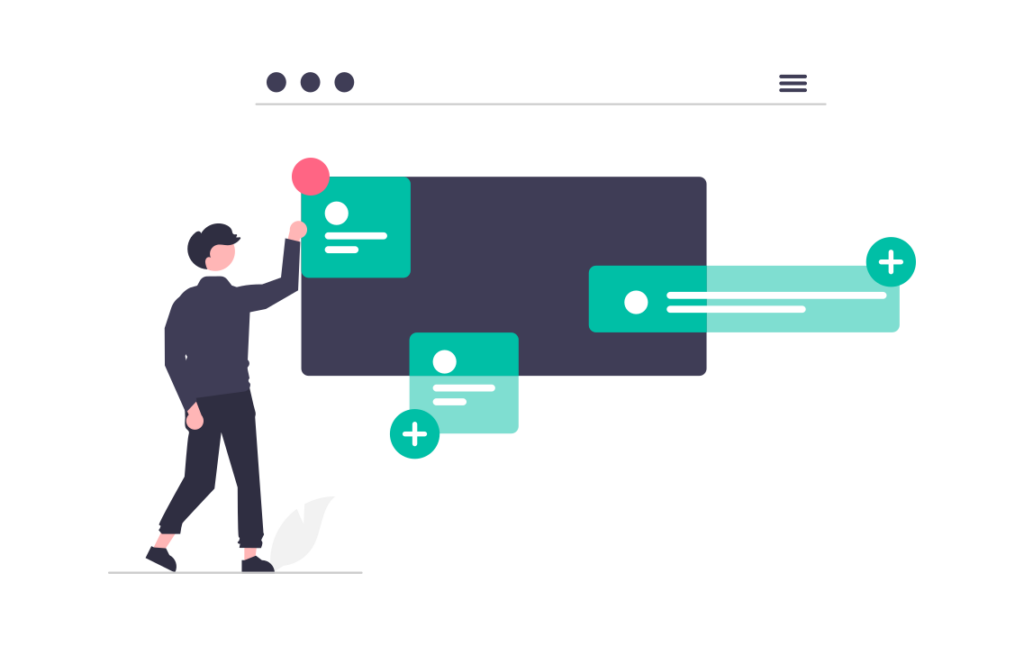Exploring Bullseye Framework Examples

The Bullseye Framework is a powerful tool that has been widely embraced by businesses across various industries. In this article, we will dive deep into the world of the Bullseye Framework, exploring its origin, purpose, key components, and real-world examples of its application. We will also analyse its success through intriguing case studies and provide a step-by-step guide to implementing it in your own business. Finally, we will look ahead to the future of the Bullseye Framework, examining evolving trends and predicted developments.
Understanding the Bullseye Framework
Before we delve into the details, it’s essential to grasp the fundamentals of the Bullseye Framework. This strategic marketing approach aims to help businesses effectively prioritise their acquisition channels and optimise their growth strategies. By focusing on the most significant channels that yield the highest returns, companies can efficiently allocate their resources and drive substantial results.
So, where does the Bullseye Framework come from, and why was it developed in the first place? Let’s find out!
Origin and Purpose of the Bullseye Framework
The Bullseye Framework was created by Gabriel Weinberg, the founder of DuckDuckGo, a privacy-focused search engine. Gabriel recognised the need for a systematic and data-driven approach to marketing that would enable startups and businesses to achieve rapid growth.
The primary purpose of the Bullseye Framework is to provide a framework for identifying the significant channels that bring in customers or users at the lowest cost. By identifying these channels early on, businesses can focus their efforts on scaling them and drive sustainable growth.
Developing the Bullseye Framework was not an easy task. Gabriel Weinberg spent years researching and experimenting with various marketing strategies before distilling his findings into this comprehensive framework. He analysed successful companies across different industries, studying their growth patterns and identifying the common factors that contributed to their success.
Through careful observation and rigorous testing, Gabriel discovered that businesses tend to rely on a few key channels to drive the majority of their growth. These channels, often referred to as “bullseye channels,” are the ones that offer the highest return on investment and have the potential to propel a business forward.
Key Components of the Bullseye Framework
The Bullseye Framework consists of three essential components:
- Ideation: The first step involves brainstorming and generating a list of potential channels that could be effective for your business. Consider both traditional and innovative approaches, leaving no stone unturned.
- Testing: After compiling your list, it’s time to put each channel to the test. This step involves gathering data and analysing the results to determine the eventual winners.
- Focus: Once you have identified the most promising channels, it’s crucial to focus your resources and efforts on scaling them to drive maximum impact.
Each component of the Bullseye Framework plays a vital role in the overall process. Ideation allows businesses to explore a wide range of possibilities, encouraging creativity and out-of-the-box thinking. Testing helps validate assumptions and provides concrete data to inform decision-making. Finally, focus ensures that resources are allocated strategically, maximising the potential for growth.
While the Bullseye Framework provides a structured approach to marketing, it’s not a one-size-fits-all solution. Each business is unique, and the channels that work for one may not necessarily work for another. Therefore, it is crucial for businesses to adapt and customise the framework to suit their specific needs and target audience.
Now that we have a solid understanding of the Bullseye Framework let’s explore some captivating real-world examples of its application.
Examples of Bullseye Framework Application
The Bullseye Framework has proven to be a game-changer across diverse industries, from startups to well-established businesses. Let’s take a closer look at how the Bullseye Framework has been utilised in different scenarios. Below are two Growth Division strategy examples, with the client name’s changed for anonymity.
Bullseye Framework in Startups
Startups often face the challenge of limited resources and a need to grow rapidly. The Bullseye Framework provides a structured approach to identifying the most effective acquisition channels for early-stage companies.
Let’s take a look at this example of Tech Tutor, an online platform offering one-on-one tech tutorials for seniors to help them become more proficient with smartphones and computers.
Their Bullseye Framework approach:
Channels considered:
- Content Marketing
- Referral Programmes
- Partnerships
Focus channel:
Initially, they focused on Content Marketing by creating a blog with tech tutorials and articles on topics relevant to seniors.
Testing Channels:
- Content Marketing generated website traffic and some user signups but had a slower conversion rate.
- Referral Programmes were introduced, allowing existing users to refer friends or family members for discounts on future lessons.
Evaluating Results:
- Referral Programmes quickly gained traction, with existing users referring many new customers, showing a higher conversion rate and stronger customer loyalty.
- Content Marketing continued to drive organic traffic, providing a steady stream of users, albeit with a higher acquisition cost.
Winning Channels:
Tech Tutor decided to allocate more resources to the Referral Programme channel due to its strong growth and cost-effective customer acquisition. They further optimised their referral programme, making it a central part of their growth strategy.
In this scenario, Tech Tutor used the Bullseye Framework to identify and prioritise the most effective customer acquisition channels, ultimately focusing on Referral Programmes as their primary growth channel based on the results of their testing.
Bullseye Framework in Established Businesses
The Bullseye Framework is not just limited to startups; established businesses can also benefit from its implementation.
Let’s take a look at another Growth Division example. E-Shop Emporium, an established and successful e-commerce company, noticed their marketing channels were becoming less effective, and they wanted to re-evaluate their strategies.
Their Bullseye Framework approach:
Channels Considered:
- Search Engine Optimisation (SEO)
- Email Marketing
- Social Media Advertising
- Affiliate Marketing
- Referral Programmes
Focus Channels:
- E-Shop Emporium decides to initially focus on SEO and Email Marketing, which have historically been their primary channels.
Testing Channels:
- SEO continues to bring in organic traffic, but the conversion rate was declining.
- Email Marketing remained a reliable channel, although open rates and click-through rates were showing signs of stagnation.
- Referral Programmes were introduced as an experiment, offering discounts to customers who refer friends and family.
Evaluating Results:
- Referral Programmes showed promising results, with a higher conversion rate, lower customer acquisition cost, and increased customer engagement.
Winning Channels:
E-Shop Emporium decided to allocate more resources to Referral Programmes, optimising and expanding their referral strategy, and leveraging word-of-mouth marketing to boost customer acquisition and retention.
This scenario demonstrates how even established companies can use principles similar to the Bullseye Framework to assess and adapt their marketing strategies based on changing market dynamics and customer behaviour.
Implementing the Bullseye Framework in Your Business
Now that you’ve seen the remarkable results achieved through the Bullseye Framework, you’re probably eager to implement it in your own business. Fear not, as we provide you with a comprehensive step-by-step guide to getting started.
Step-by-Step Guide to Applying the Bullseye Framework
1. Ideation: Begin by brainstorming and identifying potential acquisition channels. Consider various channels such as SEO, content marketing, social media advertising, partnerships, referrals, and many more.
2. Testing: Once you have your list, allocate resources to test each channel systematically. Set clear goals and track relevant metrics to measure the success of each channel.
3. Evaluation: Assess the data collected from your tests and analyse which channels performed the best in terms of acquisition cost and conversion rates.
4. Focus: After identifying the most promising channels, shift your focus, resources, and energy towards scaling those channels. Optimise your approach to continuously improve and drive maximum impact.
Common Challenges and Solutions in Bullseye Framework Implementation
While implementing the Bullseye Framework, you might encounter a few challenges along the way. One common challenge is resource constraints, especially for startups and small businesses. To overcome this, start by prioritising the most affordable and accessible channels. Additionally, consider leveraging automation tools and outsourcing certain tasks to optimise efficiency.
Another challenge is the constantly changing digital landscape. To stay ahead, make sure to keep up with industry trends, invest in ongoing learning, and be adaptable in your approach. Collaboration and knowledge-sharing within your team can also help navigate any obstacles that arise.
Future of Bullseye Framework
As we look ahead, let’s explore the future of the Bullseye Framework. Here are some key trends and predicted developments:
Evolving Trends in Bullseye Framework
1. Data-driven decision making: With advancements in technology and data analytics, businesses will increasingly rely on data to drive their marketing decisions, making the Bullseye Framework even more valuable.
2. Personalisation and targeted marketing: As customer expectations continue to rise, businesses will need to personalise their marketing efforts further, focusing on targeted messaging and offering customised experiences.
Predicted Developments in Bullseye Framework Usage
1. Integration of artificial intelligence: The Bullseye Framework is likely to integrate AI technologies, enabling businesses to automate data analysis and gain deeper insights for strategic decision making.
2. Collaboration and knowledge sharing: Businesses will recognise the value of collaboration and knowledge sharing, promoting cross-departmental cooperation to identify and scale the most effective channels.
In conclusion, the Bullseye Framework has proven to be a game-changer in the world of marketing. Startups, established businesses, and all those in between can benefit from its strategic approach to driving growth. By using the framework’s key components, analysing real-world examples, understanding its success through case studies, and implementing it with our step-by-step guide, you can unlock the full potential of the Bullseye Framework. As the business landscape evolves, the Bullseye Framework will continue to adapt, empowering businesses to thrive in an ever-changing world.
Talk to a Growth Advisor
We create a clear, focused marketing strategy by combining our expertise with your knowledge of your business.
Related Posts

How to Build Long-Term Sustainable Growth
Learn the essential strategies and practical steps to achieve long-term sustainable growth for your business.

What Is Organic Business Growth?
Organic business growth is a term that is thrown around a lot in the business world. But what exactly...

Fixed Mindset vs Growth Mindset
Discover the fundamental disparities between a fixed mindset and a growth mindset in this insightful article.
